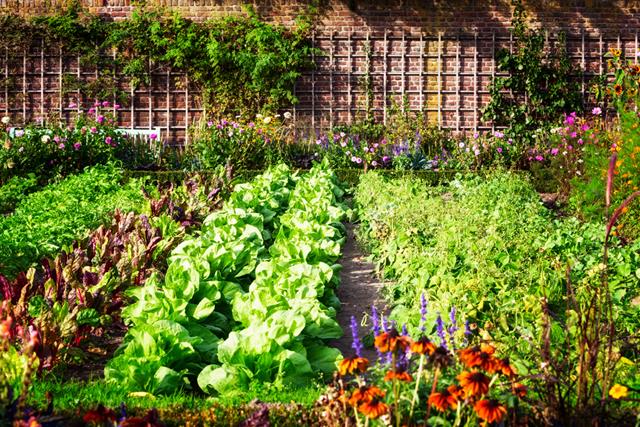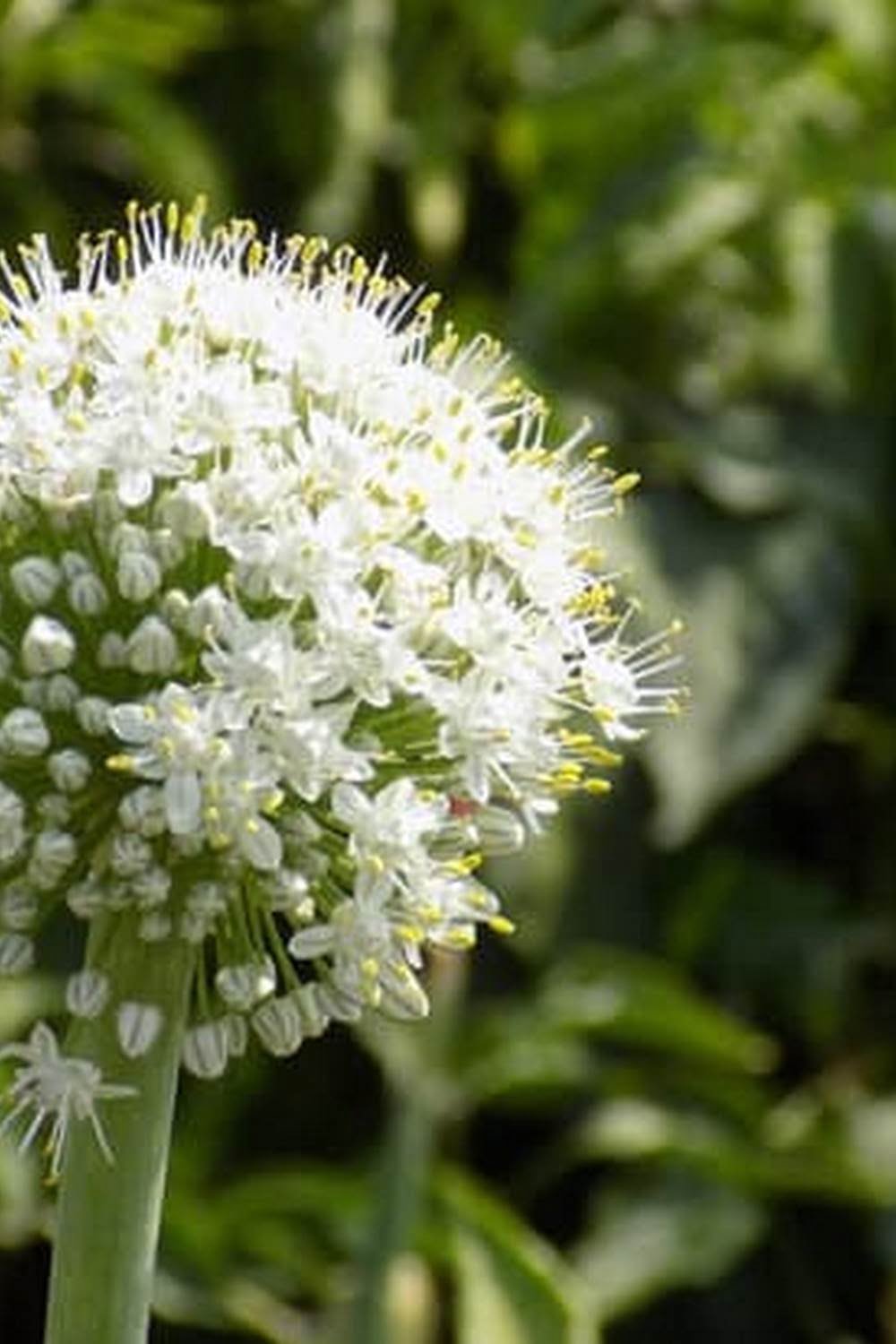Are you interested in growing your own fresh produce but don’t have a large yard or garden space? Small Patio Vegetable Gardens might be the perfect solution for you. In this article, we will explore the numerous benefits of small patio vegetable gardens and provide valuable tips and strategies for successful cultivation in limited spaces.
With the increasing trend towards urban living, many people may not have access to a traditional garden plot. However, small patio vegetable gardens offer a fantastic opportunity to still enjoy the rewards of homegrown vegetables, herbs, and fruits right on your doorstep. Whether you have a balcony, terrace, or small outdoor area, it’s possible to create a thriving garden that provides an abundance of fresh, healthy produce.
In the following sections, we will discuss how to choose the right vegetables for small spaces, the various container options available for small patio vegetable gardens, soil and fertilizer tips for successful growth, watering and maintenance strategies, pest control and disease prevention measures, as well as maximizing space through vertical gardening techniques. Additionally, we’ll delve into real-life case studies of successful small patio vegetable gardens to inspire and guide you on your own gardening journey.
So let’s embark on this green adventure together and discover the joys of urban gardening with small patio vegetable gardens.
Choosing the Right Vegetables for Small Spaces
When it comes to small patio vegetable gardens, choosing the right vegetables is crucial for successful growth and a bountiful harvest. Fortunately, there are plenty of options for vegetables that thrive in containers and small spaces, allowing urban gardeners to enjoy the pleasures of homegrown produce.
One of the most important factors to consider when selecting vegetables for small patio gardens is the size of the plants. Opting for compact or bushy varieties can help maximize space while still yielding a plentiful harvest. Some excellent choices for small patio gardens include cherry tomatoes, peppers, lettuce, spinach, radishes, green onions, and herbs such as basil, parsley, and cilantro.
In addition to considering plant size, it’s also important to choose vegetables that are well-suited to container gardening. This means selecting plants that don’t require an extensive root system and can thrive in a confined space.
Vegetables like carrots and potatoes may not be ideal for small patio gardens due to their need for deeper soil, while leafy greens and herbs are well-suited for containers. By carefully selecting the right vegetables for your small patio garden, you can create a thriving and productive urban oasis.
Container Options for Small Patio Vegetable Gardens
When it comes to small patio vegetable gardens, choosing the right containers is crucial for maximizing space and ensuring successful growth. There are various container options that can be used to grow vegetables in small spaces, each with their own advantages and considerations.
Here are some container options suitable for small patio vegetable gardens:
–
- Traditional pots and planters: These are versatile and come in a variety of sizes, making them suitable for different types of vegetables.
- Raised beds: A raised bed provides more depth for root growth and better drainage, ideal for larger vegetables or root crops.
- Hanging baskets: Utilizing vertical space, hanging baskets are perfect for growing trailing or vining vegetables such as cherry tomatoes or peas.
When selecting containers for small patio vegetable gardens, it’s important to consider factors such as drainage, material, size, and mobility. Good drainage is essential to prevent waterlogged soil, while lightweight materials make it easier to move the containers around as needed.
Additionally, the size of the container should correspond to the type of vegetable being grown – larger containers are required for plants with extensive root systems or those that produce a larger yield. Overall, choosing the right containers is an essential step in creating a thriving small patio vegetable garden.
Soil and Fertilizer Tips for Successful Growth
When it comes to small patio vegetable gardens, the soil and fertilizer you use can make a big difference in the success of your plants. The quality of your soil and the nutrients you provide to your vegetables will directly impact their growth and productivity. In this section, we’ll explore some essential tips for ensuring successful growth in your small patio vegetable garden.
Choosing the Right Soil
The first step in achieving successful growth in your small patio vegetable garden is to select the right soil. Look for a high-quality potting mix that is specifically formulated for container gardening. These mixes are designed to provide good drainage, aeration, and the right balance of nutrients for potted plants. Avoid using regular garden soil, as it can become compacted in containers and may not provide adequate support for plant roots.
Fertilizing Your Container Garden
In addition to using a high-quality potting mix, it’s important to fertilize your small patio vegetable garden regularly. Since container plants have limited access to nutrients in the surrounding soil, they rely on you to provide them with the essential nutrients they need to thrive. Choose a balanced water-soluble fertilizer and follow the application instructions on the label. Fertilize your vegetables every few weeks during the growing season to support healthy growth and abundant fruit production.
Organic Options
For those who prefer organic gardening methods, there are plenty of organic soil mixes and fertilizers available on the market. These products are free from synthetic chemicals and provide a natural alternative for nourishing your small patio vegetable garden. By choosing organic options, you can ensure that your vegetables are grown in a healthy and environmentally sustainable way. Consider exploring different organic soil blends and fertilizers to find the best options for your container garden needs.
By paying careful attention to your soil quality and providing proper nourishment through fertilization, you can set your small patio vegetable garden up for success and enjoy a bountiful harvest of fresh, homegrown produce.
Watering and Maintenance Strategies for Small Patio Vegetable Gardens
Small patio vegetable gardens require some specific watering and maintenance strategies to ensure the healthy growth of your plants. When it comes to watering, it is essential to find the right balance. Too much water can lead to root rot, while too little can cause wilting and stunted growth. The key is to monitor the moisture levels in the soil regularly and provide consistent, even watering.
One effective strategy for small patio vegetable gardens is investing in a drip irrigation system. This can help ensure that your plants receive a steady supply of water directly to their roots without wastage. Another option is to use self-watering containers, which have built-in reservoirs that can provide a constant water supply for your plants.
In terms of maintenance, regular pruning and weeding are crucial for small patio vegetable gardens. Pruning helps promote healthy growth and prevents overcrowding, while weeding ensures that your plants have access to essential nutrients and do not have to compete with unwanted vegetation. Additionally, checking for any signs of pests or diseases on a frequent basis can help catch any issues early on and prevent them from spreading.
| Container Option | Description |
|---|---|
| Planter Boxes | Narrow, rectangular containers that are great for growing multiple small vegetables. |
| Hanging Baskets | Ideal for vining vegetables like cherry tomatoes or trailing herbs. |
| Fabric Pots | Lightweight and breathable containers that provide excellent drainage. |
Pest Control and Disease Prevention for Container Gardens
One of the challenges of small patio vegetable gardens is the increased risk of pests and diseases due to the confined space and limited airflow. However, with the right strategies in place, it is possible to prevent and control these issues effectively. By implementing integrated pest management techniques and practicing good garden hygiene, you can keep your container garden thriving.
To prevent pests and diseases from wreaking havoc on your small patio vegetable garden, start by choosing disease-resistant plant varieties whenever possible. Additionally, regularly inspect your plants for any signs of pest infestation or disease. Early detection can help you take action before the problem escalates.
When it comes to pest control in small patio vegetable gardens, natural remedies can be highly effective. For example, applying insecticidal soap or neem oil can help manage common garden pests like aphids, spider mites, and whiteflies without harming beneficial insects. Encouraging natural predators like ladybugs and lacewings can also play a significant role in keeping pest populations in check.
Implementing proper crop rotation practices can also contribute to disease prevention in container gardens. This technique involves planting different types of vegetables in the same containers or areas each season to disrupt the life cycles of pests and pathogens that may be present in the soil. Overall, staying vigilant and proactive when it comes to pest control and disease prevention is crucial for the success of small patio vegetable gardens.
| Pest Control Strategies | Disease Prevention Techniques |
|---|---|
| Integrated pest management (IPM) | Choosing disease-resistant plant varieties |
| Natural remedies like insecticidal soap or neem oil | Regularly inspecting plants for signs of infestation or disease |
| Crop rotation practices | Natural predator encouragement (e.g. ladybugs) |
Harvesting and Enjoying the Fruits of Your Labor
Once your small patio vegetable gardens have flourished and produced a bountiful harvest, it’s time to reap the rewards of your hard work. Harvesting and enjoying the fruits of your labor is one of the most satisfying aspects of gardening in a small space. Whether you’ve grown juicy tomatoes, crisp lettuce, or vibrant bell peppers, there are several tips for making the most of your home-grown produce.
Harvesting Tips
When it comes to harvesting your vegetables, it’s important to do so at the right time to ensure optimal flavor and texture. For example, tomatoes should be picked when they are fully ripe and have developed their full color. On the other hand, lettuce should be harvested when the leaves are young and tender to avoid bitterness. Be sure to research each vegetable’s specific harvesting requirements to maximize their taste and quality.
Creative Recipes
Once you’ve gathered your freshly harvested vegetables, it’s time to get creative in the kitchen. Experiment with new recipes that showcase the flavors of your home-grown produce. From garden-fresh salads to hearty vegetable soups, there are countless ways to enjoy the fruits of your labors. Embracing seasonal cooking with your own harvest can be incredibly rewarding and delicious.
Sharing Your Bounty
If you find yourself with an abundance of vegetables from your small patio garden, consider sharing them with friends, family, or neighbors. Sharing your bounty not only fosters a sense of community but also allows others to appreciate the benefits of small patio vegetable gardens. You may even inspire others to start their own mini-gardens on their balconies or patios.
Maximizing Space
When space is limited, vertical gardening can be a game-changer for small patio vegetable gardens. By utilizing the vertical space available, gardeners can significantly increase their growing area and maximize their produce yield. Here are some effective vertical gardening techniques to consider for small patios:
1. Vertical Planter Walls: Installing a vertical planter wall is an excellent way to make the most of limited space. These walls can be made from a variety of materials, such as wood, metal, or fabric pockets. They allow plants to grow vertically, creating a lush green backdrop while freeing up valuable floor space.
2. Hanging Baskets and Pots: Hanging baskets and pots are ideal for growing trailing vegetables and herbs in small patio settings. These containers can be suspended from the ceiling or mounted on walls, offering a visually appealing way to showcase plants while saving precious ground space.
3. Trellises and Arbors: Incorporating trellises and arbors into small patio gardens provides support for climbing vegetables like tomatoes, cucumbers, and beans. Vertical growing not only saves space but also encourages better airflow and sun exposure for healthier plants.
By employing these vertical gardening techniques, urban gardeners with small patio spaces can cultivate a bountiful harvest of fresh vegetables and herbs without compromising on square footage. Whether it’s through vertical planter walls, hanging baskets, or trellises, maximizing vertical space opens up new possibilities for flourishing small patio vegetable gardens.
Case Studies
Gardening in a small patio space can be challenging, but with the right know-how and techniques, it is completely possible to grow a flourishing vegetable garden. In this section, we will showcase some case studies of successful small patio vegetable gardens to inspire and guide those who may be new to the concept or looking for ideas to enhance their own small gardening spaces.
One example of a successful small patio vegetable garden is that of Sarah and Mark, who live in a city apartment with only a small balcony as outdoor space. Despite the limited area, they have managed to cultivate an impressive array of vegetables including tomatoes, peppers, and herbs in various containers. By utilizing vertical gardening techniques such as trellises and hanging planters, they have maximized their space and created a lush green oasis in their urban setting.
Another inspiring case study is that of the Ramirez family, who transformed their tiny concrete patio into a thriving vegetable garden. With the use of raised beds and carefully selected compact varieties of vegetables, they have been able to grow an abundant supply of produce including lettuce, radishes, and carrots. Through proper soil maintenance and regular watering, they have achieved great success in their small gardening endeavor.
Lastly, we look at the example of Tom, who resides in a condominium with only a narrow strip of outdoor space. Undeterred by the lack of traditional gardening space, he has implemented creative solutions such as repurposing old furniture into planters and utilizing hanging baskets for strawberry plants. With these resourceful methods, he has established a fruitful small patio vegetable garden that not only provides fresh produce but also adds beauty to his outdoor living area.
These case studies demonstrate that with thoughtful planning and innovative approaches, even the smallest of patio spaces can be transformed into productive and rewarding vegetable gardens. Whether it’s through vertical gardening techniques or utilizing unconventional containers, these examples prove that anyone can enjoy the pleasures of gardening no matter how limited their outdoor space may be.
Conclusion
In conclusion, small patio vegetable gardens offer a myriad of benefits for urban dwellers looking to connect with nature and enjoy the fruits of their labor. With a little creativity and know-how, even the smallest of spaces can be transformed into thriving green oases. By choosing the right vegetables, utilizing suitable containers, and employing proper soil and fertilizer techniques, anyone can experience the joy of growing their own produce right on their doorstep.
Watering and maintenance strategies are crucial for the success of small patio vegetable gardens, as is pest control and disease prevention. By staying proactive and attentive, gardeners can ensure that their plants remain healthy and productive. Additionally, vertical gardening techniques can be employed to maximize space, allowing for even more bountiful harvests in small urban settings.
The case studies presented in this article serve as inspiring examples of what can be achieved with small patio vegetable gardens. From balcony gardens to rooftop terraces, these real-life success stories demonstrate that anyone can experience the satisfaction of growing their own food in an urban environment.
Ultimately, embracing the joys of urban gardening with small patio vegetable gardens not only enables individuals to enjoy fresh produce but also fosters a sense of connection to the natural world right at home.
Frequently Asked Questions
How Do You Grow Vegetables on a Small Patio?
Growing vegetables on a small patio is definitely doable with some strategic planning. First, consider the size of your containers – bigger pots allow for deeper root growth. Also, choose compact varieties of vegetables that won’t take up too much space.
What Vegetable Gardens Grow in Small Spaces?
When it comes to vegetable gardens in small spaces, you can opt for options like cherry tomatoes, peppers, lettuce, radishes, and herbs like basil and thyme. These plants tend to thrive in smaller containers or confined areas and can still yield a good harvest.
What Vegetables Can You Grow in Small Pots?
Believe it or not, you can grow quite a few vegetables in small pots! Some good options include cherry tomatoes, green onions, hot peppers, lettuce, spinach, and even compact varieties of zucchini or cucumbers. Just be sure to select dwarf or bush varieties that don’t need too much room to spread out.

If you’re looking to get into vegetable gardening, or are just looking for some tips on how to make your current garden better, then you’ve come to the right place! My name is Ethel and I have been gardening for years. In this blog, I’m going to share with you some of my best tips on how to create a successful vegetable garden.





